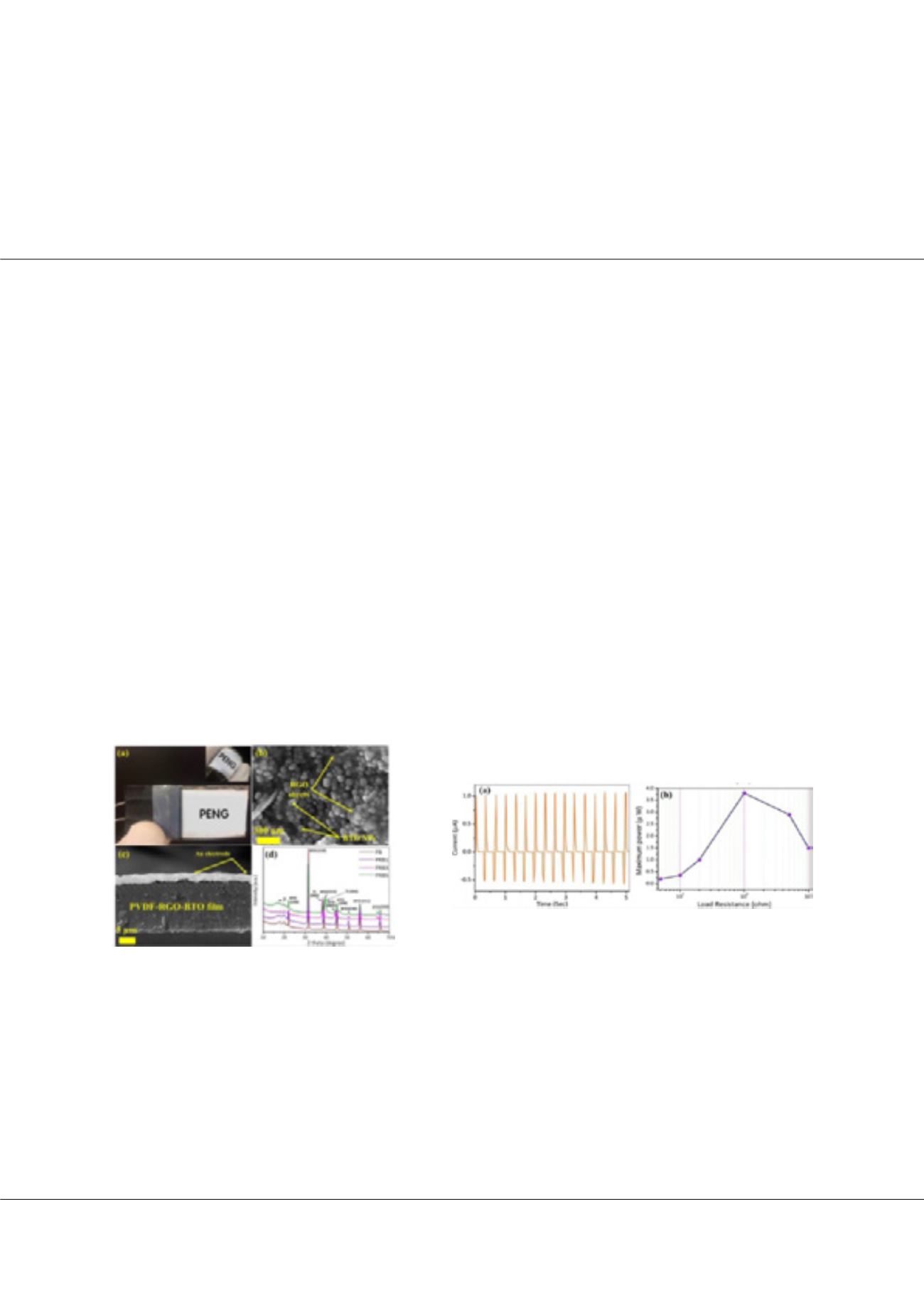

Page 45
Notes:
conferenceseries
.com
Polymer Sciences | ISSN: 2471-9935
October 02-03, 2017 Chicago, USA
3
rd
International Conference on
Polymer Science and Engineering
Synthesis of high dielectric constant flexible piezoelectric sheet using P(VDF-TrFE)-BTO-rGO composite
and its application to energy harvesting
Usman Yaqoob
and
Hyeon Cheol Kim
University of Ulsan, Republic of Korea
P
iezoelectric materials have attracted considerable attention due to their ability to scavenge electrical energy directly from ambient
mechanical sources. The energy harvesting from these materials can be a promising way to phase out conventional batteries
and power cables. Over the past few decades, considerable efforts have been made to develop a flexible piezoelectric material that
possesses high dielectric constant and high breakdown strength by combining polymer-ceramic composites. However, high amount
of ceramic filer (>50 vol%.) is required to obtain the maximum dielectric constant (k) from the composite material which can reduce
the mechanical flexibility of the composite film. To address this matter, and for further enhancement in k value, a possible solution
is to employ a conductive filler. The introduction of conductive filler will not only elevate the dielectric constant by forming several
micro-capacitors inside the composite but will also assist in the stabilization of the polar beta (β) phase of the P(VDF-TrFE). The
polar β phase of polymer is highly required to obtain maximum energy harvesting properties. Herein, we presents the synthesis and
optimization of flexible piezoelectric materials based on poly(vinylidenefluoride)-reduced graphene oxide-barium titanate (PVDF-
RGO-BTO) for its application in energy harvesting. To obtain the maximum dielectric constant, different compositions have been
prepared by varying the reduced graphene oxide (RGO) contents in the PVDF-BTO nanocomposition. The sample with 5wt% RGO
contents (PRB5) has revealed maximum dielectric constant of 170 at 1 kHz. Therefore, has been selected to fabricate the piezoelectric
nanogenerator (PENG). The fabricated PENG exhibits maximum open circuit voltage of 4 V(pk-pk) and short-circuit current of 1.5
μA(pk-pk) at an applied force of 2N. Additionally, the maximum output power for the fabricated PENG was recorded around 3.8 μW
at 1 MΩ load resistance. It was estimated that fabricated PENG can be a promising energy source for futuristic flexible electronics.
Biography
Usman Yaqoob received his
B.Sc. from the School of Electronics Engineering, International Islamic University Islamabad, Islamabad, Pakistan, in 2013. He is
now working as a Ph.D. candidature in the School of Electrical Engineering, University of Ulsan, Ulsan, South Korea. His research interests include WO3, CNTs,
graphene based flexible nanosensors and flexible piezoelectric nanogenerators.
usmanyqb3@gmail.comUsman Yaqoob et al., Polym Sci, 3:3
DOI: 10.4172/2471-9935-C1-002














